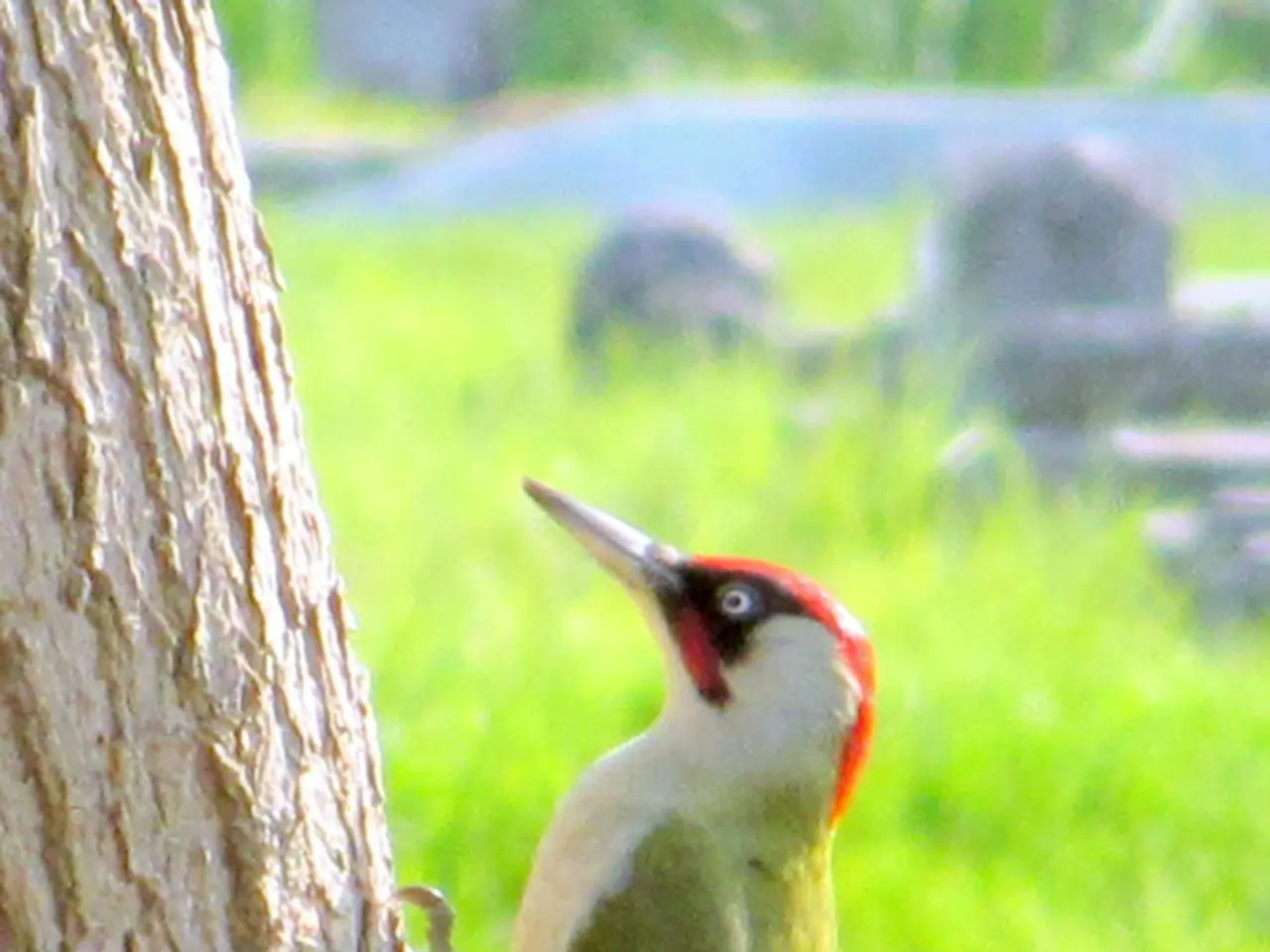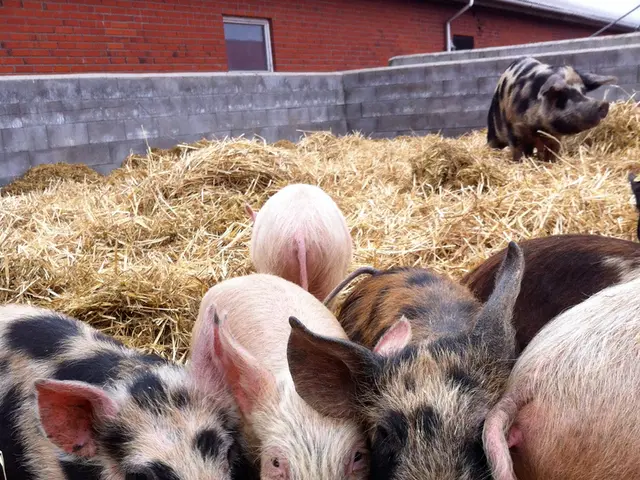Noise of Spring: It's indeed the rhythm of the Hammering Sounds
The lesser spotted woodpecker (*Dryobates minor*), a small, sparrow-sized bird, has experienced a significant decline in the UK, with its population now estimated at around 1,500 pairs[1]. This red-list conservation species is primarily found in southern England, with its numbers dwindling due to a combination of habitat loss, insect declines, and the effects of climate change[1][4].
Habitat loss and degradation are significant contributors to the decline of lesser spotted woodpeckers. The removal and fragmentation of mature woodlands reduce suitable nesting and foraging habitats for these birds, which depend on mature trees, especially those with dead or decaying wood, for nesting cavities and feeding[1]. The conversion of woodlands and traditional hedgerows into arable farmland has further reduced available habitat and connectivity between wooded areas[1]. Moreover, the removal of dead and dying trees for safety or tidiness by landowners reduces food sources and nesting opportunities.
The decline in insect populations is another critical factor affecting the lesser spotted woodpecker. These birds primarily feed on insects, especially larvae found in wood. The well-documented decline in UK insect populations, due to factors such as pesticide use and habitat loss, reduces their food availability[4].
Increased numbers of great spotted woodpeckers, which are larger and more aggressive, may outcompete or even predate upon lesser spotted woodpeckers, although this is less clearly documented than habitat and food factors. Harsh winters can also impact survival rates, particularly for small, insectivorous birds like the lesser spotted woodpecker[4]. Shifts in climate may alter the timing of insect emergence, affecting breeding success, though the full extent of this impact remains to be fully understood.
Conservation efforts are now focused on habitat restoration, deadwood retention, and monitoring to reverse these trends. The lesser spotted woodpecker is a focus species for organizations like the RSPB, indicating that conservationists are prioritizing interventions to halt further declines[1]. However, the lag in recovery highlights the challenges posed by these multifaceted pressures[1].
The great spotted woodpecker (*Dendrocopos major*), the most common of the three native woodpeckers in the UK, has seen its population boom since the 1970s, now standing at an estimated 140,000 pairs[2]. These birds are known for their distinctive hammering sound, which is used to mark territory, and their ability to consume large quantities of pine cones. In 2024, a young great spotted woodpecker was captured on camera trying to ring a doorbell in an apparent attempt to get an empty bird feeder filled[3].
The green woodpecker (*Picus viridis*), the largest of the UK woodpeckers, is most easily identified by its "yaffle" or laugh. This bird spends a good deal of its time hopping around on the ground probing for ants. Unlike the great spotted woodpecker, the green woodpecker rarely drums. Urban great spotted woodpeckers have been known to use gutters, drainpipes, and satellite dishes for drumming. Woodpeckers are members of the Picidae, an ancient family of birds that began to evolve 60 million years ago.
The green woodpecker has a long history in folklore and mythology, with references dating back to ancient Babylonia and Greek mythology. Woodpeckers play a special role as ecosystem engineers, controlling insect populations and creating cavities that other species can use. They are also an 'indicator species', with their diversity being a first-rate indicator of the overall biodiversity and health of woods and forests.
References:
[1] RSPB (2022). Lesser Spotted Woodpecker. Retrieved from https://www.rspb.org.uk/birds-and-wildlife/wildlife-guides/bird-a-z/lesser-spotted-woodpecker/
[2] RSPB (2022). Great Spotted Woodpecker. Retrieved from https://www.rspb.org.uk/birds-and-wildlife/wildlife-guides/bird-a-z/great-spotted-woodpecker/
[3] The Guardian (2024). Woodpecker filmed trying to ring doorbell for bird feeder. Retrieved from https://www.theguardian.com/uk-news/2024/apr/01/woodpecker-filmed-trying-to-ring-doorbell-for-bird-feeder
[4] RSPB (2022). Insects in Decline. Retrieved from https://www.rspb.org.uk/our-work/science/our-research/projects/insects/
While the lesser spotted woodpecker's declining population is predominantly attributed to habitat loss and climate change, there is a growing concern about the impact on these birds from changes in home-and-garden habits. For instance, the removal of dead and dying trees for safety or aesthetic reasons can reduce food sources and nesting opportunities. On the other hand, adopting a lifestyle that is friendly to native wildlife, such as retaining deadwood in gardens and providing bird feeders, can contribute positively to the conservation of the lesser spotted woodpecker and other bird species.




